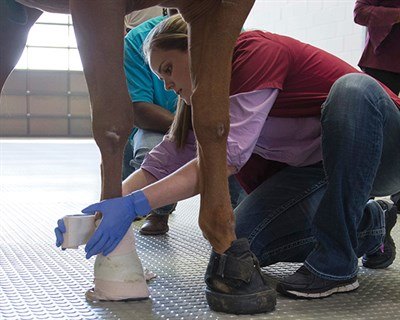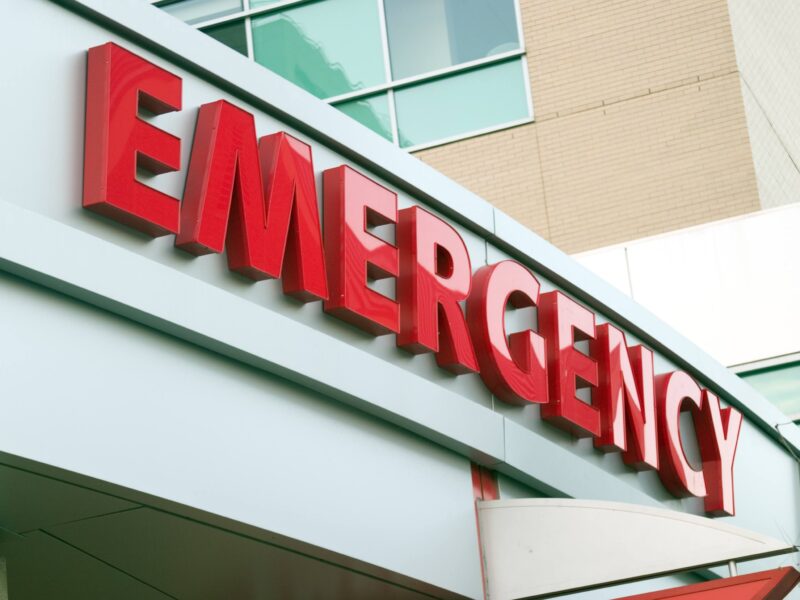The unprecedented devastation caused by Hurricane Harvey displaced countless people. Many were forced out of their homes to find shelter because of the extensive flooding, the damage from which claimed almost everything they owned.
Port Arthur resident Charles Moss lost his home and many of his belongings in the storm, and, for a night, he thought he lost his six-year-old gelding named Kash.
Moss was trying to rescue Kash from the floodwaters when the horse was startled by the rumblings of the storm and escaped from Moss’ grip.
“There was no calming him down,” Moss said. “A power line fell and hit the water, and he took off running. The water was too high, so we had to wait until the next morning to search for him.”
Moss said the unexpected floodwaters made it a challenge for many horse owners to recover their animals.
“A lot of people lost their horses because they didn’t expect the water to get that high,” Moss said. “They couldn’t do anything to save them.”
Moss immediately contacted the Jefferson County Sheriff’s Department, giving officials a description of Kash and sending pictures for identification. The next morning, the sheriff’s department said they had located Kash and had sent him to the Texas A&M Large Animal Hospital (LAH) in College Station.
Many horses were sent to Ford Park in Beaumont, where the owners could go to claim their lost animals; Kash, however, was sent to the Veterinary Medical Teaching Hospital (VMTH) , where animals with serious injuries were taken to receive treatment.
Dr. Michelle Coleman, an assistant professor of large animal internal medicine in the LAH, operated on Kash, and a team that included other LAH doctors, as well as veterinary students on the College of Veterinary Medicine & Biomedical Sciences’ (CVM) fourth-year clinical rotation, took proper precautions to ensure his healing.
“He had a laceration right over a joint, so we cut some tissue off and sutured it back up,” Coleman said. “The wound was really deep. Every time we went to check on the injury, he reacted poorly, so we knew he was very sensitive. We put a foot cast on him to increase his comfort level and make sure he would heal as quickly as possible.”
Coleman said Kash’s injury was significant, but many other horses did not fair as well.
“Many horses were submerged underwater for more than 10 hours,” Coleman said. “The skin of those horses just started sloughing off. Kash was one of the lucky ones.”
Moss was thankful for the quick response from the sheriff’s department at the time of the flooding.
“The longest Kash was in the water was about eight hours,” Moss said. “ I was glad the sheriffs found him when they did. It could have been a lot worse.”
Moss and the community of Port Arthur have a lot of rebuilding to do. Moss said his entire neighborhood was completely destroyed, and in late September, when he picked up his gelding, Moss was concerned about bringing Kash home to no food or shelter, but donations of hay had started pouring in after the hurricane.
“People from all over the world were donating feed; we have hay for about a year now because of the generous donations,” Moss said. “We came across a big blessing. I also found a stable for him to stay, with a lady who breeds jumping horses. She will help take good care of him.”
Coleman said it will take some time for Kash to heal physically, but the emotional toll an event like this takes on a horse can be harder to repair.
“He will just need to get used to being loved again,” Coleman said.
Moss said he is grateful for everyone at Texas A&M who has helped Kash through the healing and recovery processes and that he is confident that Kash received quality care while at the LAH.
“I want to thank everybody who helped Kash,” Moss said. “He can have a little attitude at times, so sometimes working with him requires a great deal of patience.”
Even though Kash’s full recovery will take time, Moss said he looks forward to seeing Kash completely healed and performing at his best once again.
“We trail ride a lot,” Moss said. “Once Kash heals, he is going to be trained as a cutting horse. I will give him a good four to six months before I even try to ride him, just to make sure he is completely healed. I’m just really thankful that he is alright.”
###
For more information about the Texas A&M College of Veterinary Medicine & Biomedical Sciences, please visit our website at vetmed.tamu.edu or join us on Facebook, Instagram, and Twitter.
Contact Information: Megan Palsa, Executive Director of Communications, Media & Public Relations, Texas A&M College of Veterinary Medicine & Biomedical Science; mpalsa@cvm.tamu.edu; 979-862-4216; 979-421-3121 (cell)
This story originally appeared in the Spring 2018 edition of CVM Today magazine.






